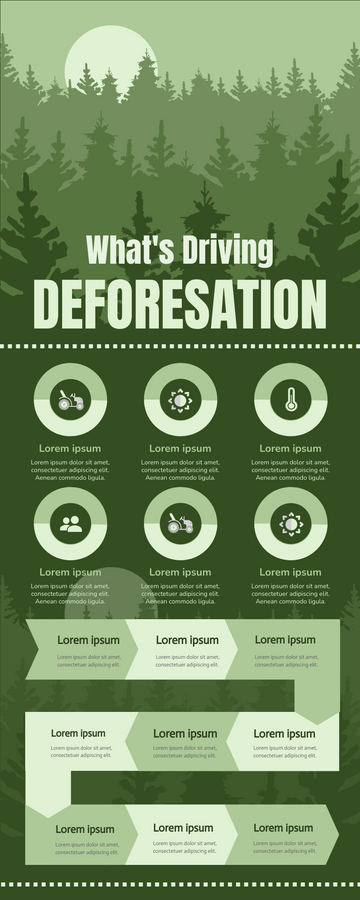Deforestation Infographic
Deforestation refers to the cutting, clearing, and removal of natural forest. If the world is seeking to slow down climate change, conserve biodiversity and feed billions of people, trees will inevitably become an important part of the solution. However, it tends to take place on a wide scale, sacrificing the long-term advantages of towering trees and reaping short-term benefits. Deforestation has a negative impact on our environment and climate change.
The Cause of Deforestation
Typically, the removal of a forest or stand of trees from land which is then converted to a non-forest use, i.e. for agriculture and farming purposes. Agricultural growth is the main cause of deforestation, habitat fragmentation and loss of forest biodiversity.
From 2000 to 2010, the large-scale commercial agriculture (mainly animal husbandry, soybean and oil palm planting) accounted for 40% of tropical deforestation, 33% are rural subsistence agriculture. Trees were cut down and used as building materials, wood, or sold as a fuel, deforested land is used as livestock and crop pasture.
Key Facts of Deforestation
- Tropical forests are being lost at a rate of around 31,000 square miles / year, according to satellite data.
- Around 200,000 acres of rainforest (about 14 times the size of Manhattan) burns all over the world everyday.
- Around 36 football fields covered in trees are destroyed every minute as a result of deforestation.


